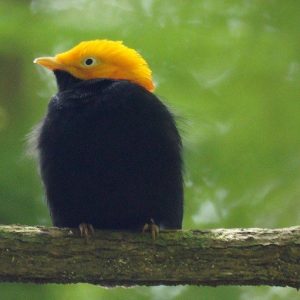According to the Science Daily article, A team of researchers from Scarborough revealed ,through a series of tests, a golden crowned manikin. This bird was first discovered in Brazil in 1957 ,but not seen until 2002.
“While hybrid plant species are very common, hybrid species among vertebrates are exceedingly rare,” says Associate Professor Jason Weir, senior author of the research.
A hybrid species forms when two parental species mate to produce a hybrid population, which then causes the birds to stop being able to freely interbreed with the parental species
The teams gathered genetic and feather samples over two trips to Brazil. They sequenced a large portion of the golden-crowned manakin’s genome including 16,000 different genetic markers. This led to the finding that 20 percent of its genome came from the snowy-crowned, and about 80 per cent came from the opal-crowned. In addition to that, the researchers used coalescent modelling to figure out at what point the golden-crowned split off from its parental species.
“The golden-crowned manakin ended up with an intermediate keratin structure that does a poor job of making either the brilliant white or the reflective iridescence of the parental species,” says Weir.
In its early existence, The golden-crowned manakin likely had duller white or grey feathers due to its keratin structure ,but eventually grew into yellow feathers to attract females. This led to unique color of the species.
“Without geographic isolation, it’s very likely this would never have happened because you don’t see the hybrids evolving as separate species in other areas where both parental species meet.”


Leave a Reply